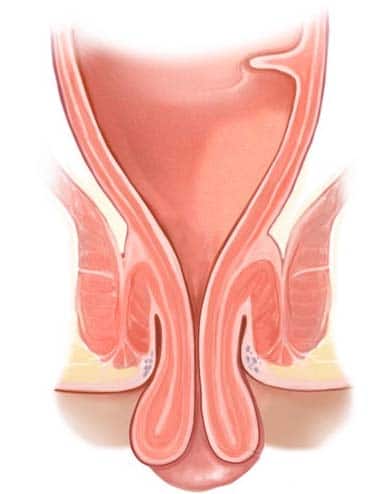
Rectal prolapse is a form of protrusion from the rectum other than hemorrhoids. Just as in hemorrhoids, the same “cushions” or “pads” consisting of discrete masses of thick submucosa which contain blood vessels, smooth muscle, elastic and connective tissue are the cause of the trouble. But instead of forming individual “pouches” as in hemorrhoids, the whole swollen lining of the rectum forms a thick ring which entirely surrounds the inside of the lower part of the rectum.
There are two types of rectal prolapse. The first type, partial prolapse, is a folding down of this thickened ring within the rectum. It obstructs the free passage of stool and symptoms are the same as with hemorrhoids but with particular emphasis on the feeling of “weight” or pressure. In the second type, complete prolapse, the swollen ring covered by the lining (mucus membrane) of the rectum protrudes on the outside through the anal orifice into puffy folds. It may or may not bleed at this time, but certainly causes pain and discomfort.
The symptoms of rectal prolapse may include mucus discharge, difficult and unrewarding evacuation, failure of satisfaction at stool, moisture, bleeding, protrusion, and pain and a dull ache, as well as the symptoms associated with hemorrhoids. Because rectal prolapse is an enlarged and advanced case of chronic hemorrhoids, Dr. Cranford treats this condition using the “Keesey Technique”.

Try Dr.Cranford’s all nature stool softener. Col-eze absorbs water, and helps the bowel lead to normal movements.